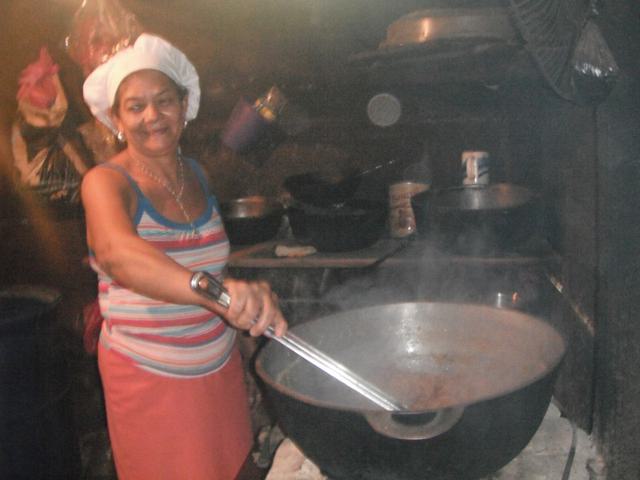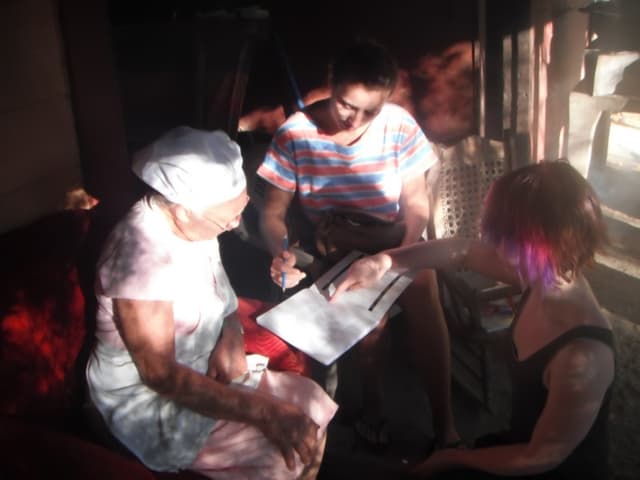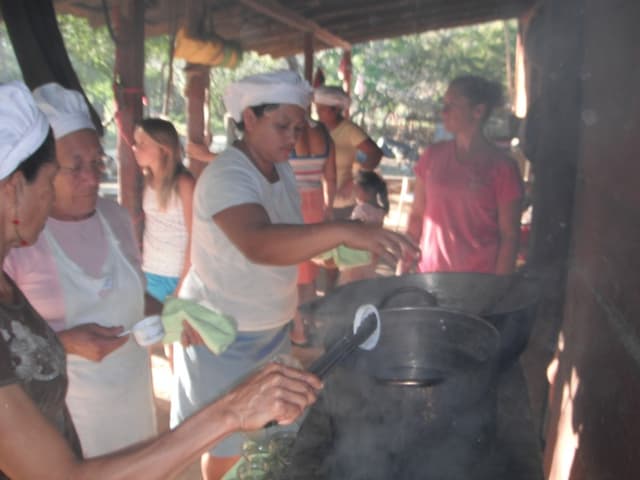A day with the jam ladies
Let’s face it, being a fundraiser can be tough. To be successful we need to constantly share what worked and what didn’t. We must keep learning and growing, not just as fundraising professionals but also as human beings. But I think the most important fuel for success is inspiration.
- Written by
- Kimberley MacKenzie
- Added
- June 02, 2014

I was inspired most recently when, on my holidays, I visited a small rural community called El Carizal, just 6.5 km south of the small coastal town of San Juan del Sur, in Nicaragua. This is where I was introduced to some of the most determined, kind, sincere and hard working women I have ever met. These women are the founders of The Jam Project, known locally as ‘Condimentos Del Carizal’, and we very fondly referred to them as ‘the jam ladies’.
When I woke on the morning of our visit I was thinking about how great it would be for my children to give away the Christmas presents we had brought with us and to participate in a rural English class with some local children. I had no idea that at the end of the day I would go to sleep marvelling at how we were a part of the very first site visit to a brand new charity, whose mission is to build a local health centre.

After the English class we walked a hundred metres up a dirt road to a typical rural house made of sheet metal. This is where the jam ladies were waiting for us. A leader from the women’s collective responsible for starting the project told us how they sell jam made from locally grown, seasonal, organic fruit, like guava, pineapple and tamarind. The women grow the fruit, make, package and sell the jams, as well as manage the business as a whole. They are raising money from the profits to build a health centre for the community, which will also have a modern kitchen for further jam production to ensure the centre can be sustained.
In order to achieve their mission the jam ladies, many of whom have never attended school themselves, need to be able to communicate with tourists. We spent some time helping them learn to understand likely questions from curious English-speaking tourists: How much for the jam? What kind of jam is it? And even more importantly, how to respond.
After the impromptu lesson it was time to tour their jam-making ‘facilities’. The ladies currently run the business from one of their homes. The house has two rooms, a small kitchen and a bedroom; nine people live here. The floor is hard packed dirt, in the kitchen there is a single light bulb, a manual water pump and an open cooking fire, with a second fire outside on the veranda. The jam was in full production.

The tools were simple: two large cast iron pots, wooden spoons, wood fire, seasonal fruit and canning jars. If you have ever made your own preserves you know it is back-breaking work. You also know that with the fatigue comes extraordinary pride as you line up those hot jars and count how much of your harvest is now preserved on the counter. Now imagine what it would be like to do whilst camping outside and using an open fire. The ladies share this gruelling work, taking turns peeling the fruit, stirring the jam, feeding the fire and bottling it up.
Not once during our visit did any of us think about how poor these people were or how a family of nine slept in one room on a hard packed dirt floor – those thoughts came later when we were back in our comfortable hotel. The jam ladies created an atmosphere that was rich with laughter, pride, kindness and determination. The children of the women waited quietly to the side in a horse drawn cart. The men hovered on horses in the distance. The dogs were tied up so as not to disturb us and the parrots in nearby trees provided an appropriately vibrant audial backdrop.
Together these women are currently working towards raising a sum of $10,000. Yes, they will have to make a lot of jam, but their commitment to improve their community is steadfast. Their entrepreneurial spirit, self-belief and determination to achieve their goal mean they will think nothing of overcoming any obstacles that may litter their path along the way.
A great deal of preparation had been done in anticipation of our visit. My family was deeply honoured to be a part of this community, if only for a short while, and our visit ended with a simple transaction:
My children: ‘How much for the jam?’
The jam ladies: ‘Three dollars.’
My children: ‘Two jars please.’
The jam ladies: ‘Thank you.’
The story of the jam ladies can serve to remind us all of the core essentials for creating lasting and positive change in the world:
- Have a clear goal – define what success will look like.
- Create a realistic work plan.
- Do what you can today with the resources you have.
- Build a community around you.
- Be willing to learn whatever necessary skills you currently lack.
- Put your heart and soul into everything.
- Don’t grumble – instead laugh, smile and sing together.
- Look beyond your immediate community for opportunities.
- Be collaborative.
- Work hard.
After many hugs and pictures I left the jam project feeling quite emotional and deeply humbled. If the jam ladies can achieve so much with so little, surely I can stop grumbling whenever I have to walk across my office to the shared printer. In fact, I will.
To get involved or learn more about El Carizal and The Jam Project visit http://www.elcarizal.com/index2.html

















